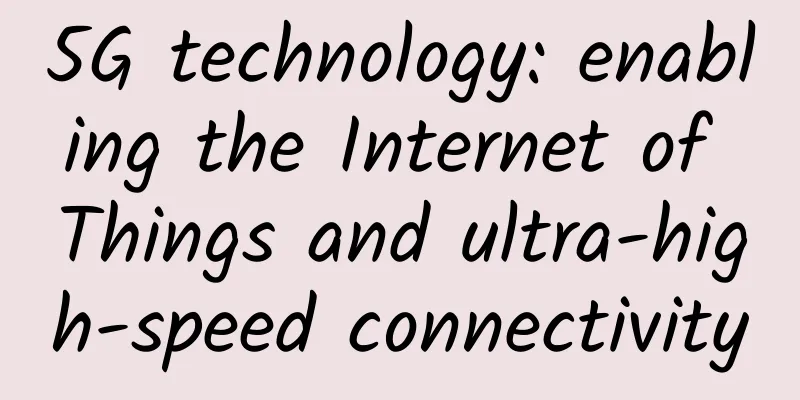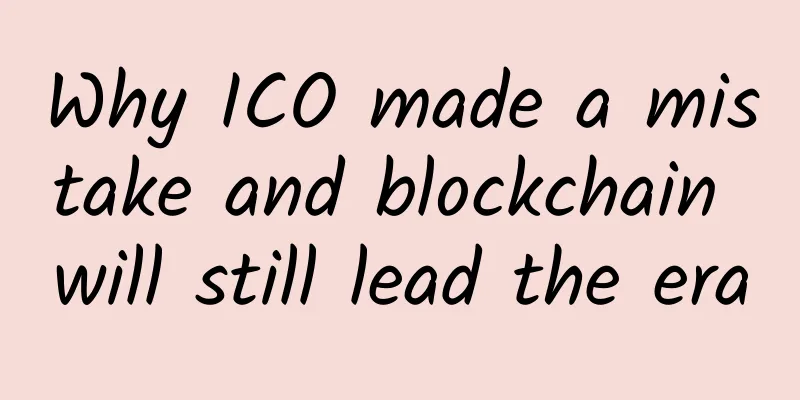Comprehensively promote IPv6 and completely change network life

|
If you have been following the developments in network technology, you would be impressed by the intensive coverage of IPv6 in recent years. In short, IPv6 is the sixth version of the IP address protocol, which was created to replace the aging and overloaded IPv4. Our network is composed of a large number of IP addresses. With the development of mobile Internet, the devices connected to the Internet have already grabbed all the public network addresses provided by IPv4. The media swears that IPv4 is dead, and in fact, IPv4 has indeed been exhausted. The world's IPv4 addresses have been allocated a few years ago, and the spotlight of history is now on IPv6, which is facing the more distant future. However, the promotion of IPv6 has long seemed to be a lot of noise but little action, and there has been no news or action on the promotion of IPv6 in China. Now, the downpour of IPv6 has finally arrived. What does it mean to fully promote IPv6 in China? What changes will it bring? Let's talk about it. Say goodbye to intranet IP Compared with IPv4, the biggest advantage of IPv6 is that it can provide nearly unlimited IP addresses. The biggest reason why IPv4 cannot be replaced is that IP addresses have been exhausted. Compared with IPv4, which has only 4.2 billion IP addresses, the address length of IPv6 is designed to be 128 bits. Theoretically, IPv6 can provide 2 to the 128th power, which is about... I can't even count how many billions of IP addresses there are, you can think of it as infinite. With the unprecedented development of mobile Internet and Internet of Things, IPv4 has long been unable to stop the tide of history. If you have noticed, you can find that operators have given you fewer and fewer public IP addresses in recent years. This is the result of the exhaustion of IPv4 resources. What's the problem with not having a public IP address? This means that you are often using an intranet IP that has been NATed by the operator, and the operator often does not provide comprehensive port mapping for the intranet IP, which makes the intranet IP experience completely outperformed by the public IP in terms of game online, P2P downloads, device interconnection, etc. Can't find anyone to play online games? Can't find the node for BT downloads? Do you need third-party software to remotely control your computer? IPv6 will slap you in the face with endless public IP addresses, allowing you to say goodbye to these annoying things. After the implementation of IPv6, operators no longer need to allocate IP addresses to users through NAT - NAT also costs money. If you have a direct IP address, you will use it more conveniently and operators can save some trouble. Why not? In fact, the plan for promoting IPv6 also clearly states that by the end of 2020, new network addresses will no longer use private IPv4 addresses - intranet IPs have already been designated for retirement, so operators naturally have no reason to allocate intranet IPs to users. Give the Internet of Things a Place The sudden expansion of IP address demand is probably closely related to the explosion of mobile Internet. In the past, only some families had computers, and 4.2 billion IP addresses could generally cope with it; but when everyone had a smartphone, IPv4 was a bit stretched; in recent years, a bunch of devices that can be connected to the Internet have suddenly emerged, including televisions, washing machines, refrigerators, rice cookers, etc. In the future, more traditional items will be connected to the Internet, such as stationery, furniture, kitchen utensils...even clothes, shoes and socks, etc. As long as the chip is small enough, there is nothing that cannot be done, the only thing is what you can't think of.
The significance of the emergence of mobile Internet is far more than just allowing you to play with your mobile phone on the road. The Internet of Things is a more valuable gift that mobile Internet gives to the entire society. IPv4 can only sigh in despair at the rapidly developing Internet of Things. Although IP addresses can be provided to IoT devices through NAT, this will only make the network more complicated and increase unnecessary maintenance costs. If you want to assign a public IP to each device in the Internet of Things, who else can do it but IPv6? The promotion of IPv6 can create a spacious enough space for the Internet of Things. Although it cannot be said that everything around us will suddenly become smart after the popularization of IPv6, we can still expect it in this regard. Everyone has an "IP ID card" As mentioned earlier, IPv4 cannot provide sufficient IP addresses, which forces operators to provide intranet addresses through NAT. However, you can apply for a public IP if you want one, but the public IP used by individual users is often not fixed. Which IP is assigned to you depends on the actual situation. IPv4 does not have so many public IPs allocated one-to-one to users. In any case, under the IPv4 system, it is difficult to match IP addresses and individual users one by one; but in the IPv6 system, this will obviously not be a problem. The number of IPv6 addresses is enough for everyone to be assigned a fixed IP address - no matter how many you want, it is no problem. This means that the identity of the user can be directly matched through the IP address. On the one hand, this can lay the foundation for a more thorough Internet real-name system. The current Internet real-name system is mainly implemented from a management perspective, which is effective but laborious; but in the era of IPv6, the real-name system can be truly implemented from a technical level. On the other hand, this can improve management efficiency and provide users with more accurate content push. Whatever service or content a person needs can be pushed directly to a specific IP address. This experience of service to door number may become the norm in the future. A safer and more accessible Internet? In addition to the massive number of IP addresses, another advantage of IPv6 that people often talk about is the greatly improved security. In the deployment of IPv6, IPSec was once a standard feature, which means that data transmitted between IPv6 addresses is often encrypted and information can no longer be easily eavesdropped or hijacked. In fact, in the current IPv4 system, there have always been very serious security issues, which greatly affect the user experience. For example, in IPv4, DNS is such an important part of resolving URLs to IP addresses, but the data is transmitted using an unencrypted UDP connection. A middleman can easily pollute the DNS and prevent you from resolving to the correct website. And because IPv4 generally does not encrypt information, operators can easily insert advertisements on various websites. There are many examples like this. I believe everyone has a deep understanding of the chaotic current Internet environment. In IPv6, IPSec has become an unprecedentedly important agenda. Thanks to the massive public IP and IPSec, the Internet should become more secure and unimpeded. So can IPv6 solve the security problems of IPv4 related to plain text transmission? Disappointingly, it does not. IPv6's IPSec was just a feint, and now it has failed. In RFC6434, IPSec encryption is no longer a mandatory standard for IPv6. Without IPSec, IPv6 has limited security improvement compared to IPv4. Perhaps because of this, the pressure of IPv6 deployment has been greatly reduced. At least some existing network management methods will not become invalid, and network supervision will not be out of control after IPv6 deployment. Summarize In any case, the full promotion of IPv6 is an inevitable trend, and it represents the future of the Internet. If everything goes well, many people will be able to use IPv6 next year. I hope that the deployment of IPv6 will go smoothly, and let our network life open a new page from now on.
|
Recommend
10gbiz: Hong Kong CN2 GIA/Los Angeles CN2 GIA VPS 50% off, starting from $3.44/month
A friend asked about the discounts of 10gbiz this...
How 5G and WiFi 6 will impact critical sensor applications
We live in an age where wireless communications a...
How will AI and 5G drive the next wave of innovation?
Artificial intelligence (AI) continues to permeat...
Cloud signing! Changhong Jiahua and Huawei Enterprise Business reached a general distributor cooperation intention in China
[51CTO.com original article] On March 2, 2020, Hu...
How will the cancellation of data "roaming" fees, which has aroused nationwide praise, trigger a "butterfly effect"?
At the first session of the 13th National People&...
5G and Wi-Fi 6, the next generation of infrastructure?
Cellular and Wi-Fi networks have come together to...
In-depth analysis of the Raft protocol and KRaft practical demonstration
1. What is the Raft protocol? The Raft protocol i...
How to make the audit of data center assets more efficient?
Everyone has their responsibilities, but what to ...
edgeNAT newly launched US CUVIP 100M unlimited traffic VPS, 30% off for monthly payment and 40% off for annual payment
edgeNAT launched a new US CUVIP line VPS this mon...
Eight facts about data center design and construction
This article points out eight facts in data cente...
Fiber Optic Innovation: Exploring Cutting-Edge Research and Development
Fiber optic technology has revolutionized innovat...
China Mobile's July data shows sharp decline in users is still accelerating
Recently, China Mobile released its operating dat...
A Deep Dive into Data Link Layer Devices
In computer networks, there are multiple layers t...
Wi-Fi 6 Release 2 new standard released: faster upload, lower latency, more energy-efficient
Wi-Fi 6 has made significant progress compared to...
CUBECLOUD: 10% off Hong Kong CN2 GIA/Los Angeles CN2 GIA line VPS starting from 62 yuan/month
CUBECLOUD has launched a cloud season promotion, ...









